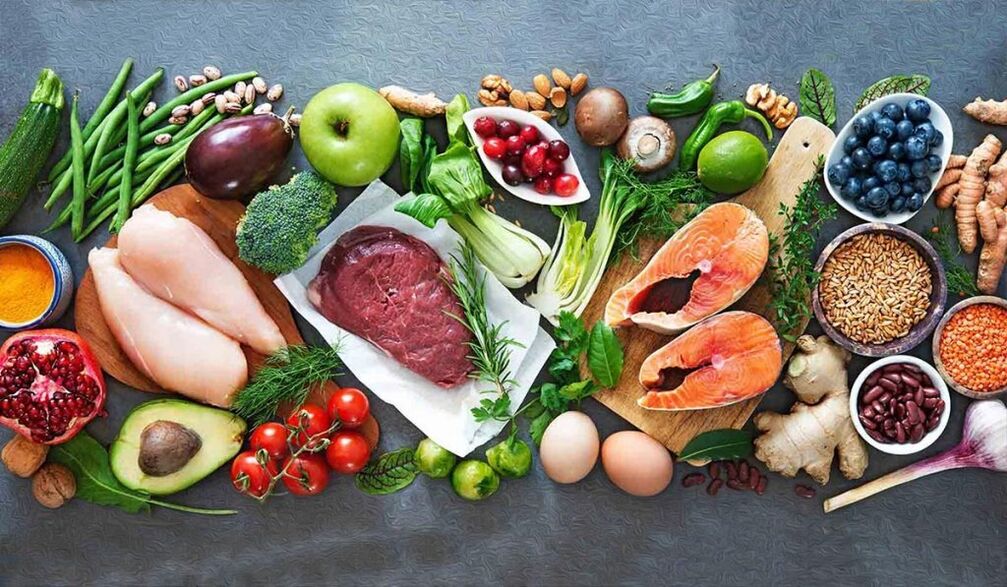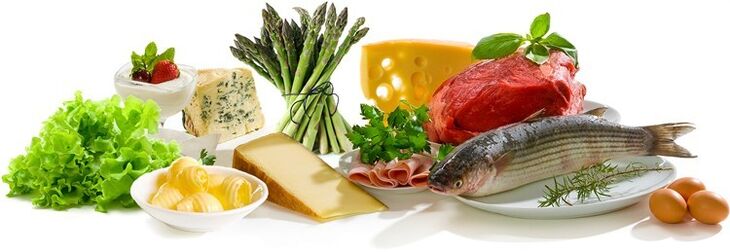
Technically, carbohydrates can be defined as a group of organic compounds found in food and in the living tissues of animals and plants. These compounds, also known as carbohydrates, are the body’s main sources of energy and fall into two main categories - simple carbohydrates and complex carbohydrates.
simple carbohydrates
Simple carbohydrates have a basic molecular structure, usually consisting of one or two parts. When taken orally, they are easily absorbed by the body and release sudden bursts of energy, followed by the same sudden drop in levels as the sugars are consumed.
Good sources of simple sugars are refined and processed carbohydrates, which are absorbed more quickly into the bloodstream. They provide energy faster than natural sugars, which have a lower glycemic index.
However, many of these refined sugars are only used as flavor enhancers in processed foods and have little or no nutritional value. This is why it is called empty calories.
Simple carbohydrates are also found in natural sources such as fruits, honey and dairy products.
Complex carbohydrates
Complex carbohydrates, on the other hand, have a more complex molecular structure, consisting of three or more parts. It takes longer for them to break down into glucose into energy. Foods that contain complex carbohydrates also contain fiber, minerals, and other nutrients.
Because complex carbohydrates break down slowly, the energy lasts longer than simple carbohydrates provide. Sources include whole grains and products derived therefrom, such as cereals, oats, rice and pasta. They are also found in potatoes, lentils, beans and peas.
When ingested, carbohydrates are digested and broken down into glucose, which is a simpler and more absorbable form. It then travels through the blood to the organs and muscles of the body, which break it down into energy. Such organs include the heart, kidneys, brain, and lungs.
Why should carbs be missed or not?
Diet has become a widely debated topic worldwide, and all such discussions tend to focus on one thing - carbohydrates. Nutrition experts have been scrambling for years to advise their patients to completely avoid carbohydrates or eat only the good ones. The result is a wide variety of diets available to everyone, including the famous Keto and Atkins diets.
To really understand whether carbohydrates should be omitted, we look at the benefits and dangers of carbohydrate consumption.
Advantages
The most important function of carbohydrates in the body is to supply energy. They are the main resources of the organization.
Most natural carbohydrate sources, such as whole grains and vegetables, also contain significant amounts of fiber, which not only promotes good intestinal health but also reduces the chances of other health problems such as cholesterol buildup.
In addition, replacing fats and fatty foods with carbohydrates, such as whole grains, can help reduce fat intake, allowing you to maintain a healthy weight. Helps fight obesity and other health problems related to overweight.
Mistakes
The main disadvantage of carbohydrate intake is weight gain. As mentioned earlier, carbohydrates break down into glucose, which is further broken down to produce energy. Excess glucose then accumulates as fat in the organs and muscles, causing weight gain. It is the basis of many carbohydrate-lowering diets.
Carbohydrates are also dangerous for people with blood sugar problems such as diabetes. They increase blood sugar levels during digestion, and people with such diseases may not be able to control their sugar levels properly.
There is even a danger of sugar dependence. The effects may be somewhat similar to ordinary street drugs.
For those who are worried about their weight and blood sugar levels, the best alternative to maintaining health may be to stop consuming carbohydrates and replace them with major energy sources such as protein.
Foods to avoid on a low carb diet
Bread and cereals
Bread is widely consumed worldwide. It is difficult to find a household that does not use baked goods. Bread made from refined or whole grains is mostly made up of carbohydrates. A slice of normal white bread can contain up to 14g of carbs, while a slice of wholemeal bread can contain up to 17g of carbs, which is clearly a bad choice for a low-carb meal.

some fruits
This may seem rather ironic given that the healthiest people in the world swear by them. Fruits are good sources of vitamins and fiber, and their health benefits are far-reaching. Some studies have even shown that they can reduce the risk of cancer and heart disease.
However, some fruits are high in carbohydrates. These include bananas, apples, grapes and mangoes. The sweeter the fruit, the more sugar it contains.
Vegetables with lots of starch
Vegetables are also important ingredients in many diets, as they favor high amounts of vitamins as well as high fiber levels, which not only aid digestion but also control weight loss and blood sugar control.
However, some vegetables contain a lot of starch, making them more digestible carbohydrates than fiber. These include corn, potatoes, sweet potatoes and beets.

Pasta
Pasta, like bread, is an essential food on the planet for many people. Not only is it cheap, but it is easy to prepare and can be served with many other foods. However, many who are worried about their weight have chosen to reduce their consumption of pasta or completely avoid consuming pasta because of the amount of carbohydrates it contains. Whether whole grain or processed, it is a bad choice for those who want to reduce their carbohydrate intake. A healthy alternative is shirataki noodles or spiraled vegetables.
Dry breakfast
For at least half of the country’s adults and children, the ideal breakfast would be a full bowl of sugary cereal. Although the objection would be that grains (especially whole grains) supply the body with much needed fiber, it is important to note that they contain much more sugar than fiber. For example, half a cup of oatmeal contains 25 grams of carbohydrate and only 4 grams of fiber.
Foods for a low carb diet
The main goal of many low carb diets is to improve weight loss and overall health. The goal is to replace carbohydrates with other energy sources, usually protein and healthy fats. The principle is that if the body gets a minimal amount of carbohydrates, it will not store them as fat. Here are some foods you should include in your low carb diet for best results:
- Lean Meat Protein - Refers to lean meats such as beef, pork, chicken, lamb, etc.
- Fish
- Leafy green vegetables such as spinach
- Dairy products are high in fat, such as cheese and butter
- Nuts and seeds, including sunflower seeds and walnuts
- Egg
- Low carb fruits and berries

Popular low carb diets
Atkins diet
The Atkin diet focuses on weight loss and aims to consume proteins and fats that are high in carbohydrates. The idea was disseminated by Dr. Robert Atkins, who wrote a book about it in 1972.
Initially, the Atkins diet was considered unhealthy and not even supported by many other nutrition experts because its followers consume large amounts of saturated fat. Over time, however, it has become popular around the world, and this is confirmed by numerous studies. It is very useful for those who want to lose weight or lower their cholesterol and blood sugar levels.
The Atkins diet consists of four stages:
- Induction phase: consume less than 20 grams of carbohydrate per day for at least two weeks. It is used to start the process of weight loss and also involves the intake of large amounts of protein and fat.
- Continuous Weight Loss: This focuses on balancing and restoring weight loss to a steady pace. This includes the slow incorporation of small amounts of carbohydrates into the diet.
- Preliminary Maintenance: In this case, the person is close to their weight goal and should slow down the weight loss process. This involves slowly returning carbohydrates to the diet until weight loss begins to slow down.
- Maintenance. This phase involves a lot of balance when a person eats as many carbohydrates as he or she can without gaining weight.
LCHF diet
The LCHF diet, which focuses mainly on weight loss, is based on low carbohydrate and high fat intake. It is also practiced for a number of other health reasons, such as to reduce the risk and consequences of type 2 diabetes, heart problems, and Alzheimer's disease.
The LCHF diet, also known as the Banting Plan (named after William Banting, who played a critical role in promoting it), involves consuming whole and unprocessed fats as well as moderate amounts of protein with minimal carbohydrate intake. Other diets, such as the ketogen and Atkins diets, are also based on this rule, making them smaller versions of the LCHF diet.
There are no standard meal plans for this diet as it needs to be tailored to individual needs. We recommend that you avoid carbohydrate-rich foods such as bread and pasta, as well as other sugary and starchy foods.

Risks of a low carb diet
While low-carb diets are ideal for weight loss (and other claimed health benefits), there are also significant risks that should not be overlooked by anyone who begins with it.
Eating little or no carbohydrates increases the chances of dying at a young age, especially in adulthood. This is evidenced by a number of meta-analyzed studies around the world.
These diets can also significantly increase mortality rates, as shown by a number of studies in which those affected received at least 50 percent of their energy from high-carbohydrate foods.
Let's summarize
Carbohydrates can be the body’s main source of energy, but they can also be blamed for problems such as weight gain and other health problems that result from consuming too much of them.
For this reason, experts have developed low-carb diets that want to replace them with fats and proteins as an energy source. Diets like Atkins and LCHF work on the same principle: eat less carbs and more protein and fat. Different diet plans and different phases are usually the only differences between such diets. For example, a low carb and keto diet. These have been associated with certain risks, such as the risk of premature death.
Therefore, it would be wise to fully understand your individual needs and consult a doctor before starting a low carb diet.

































